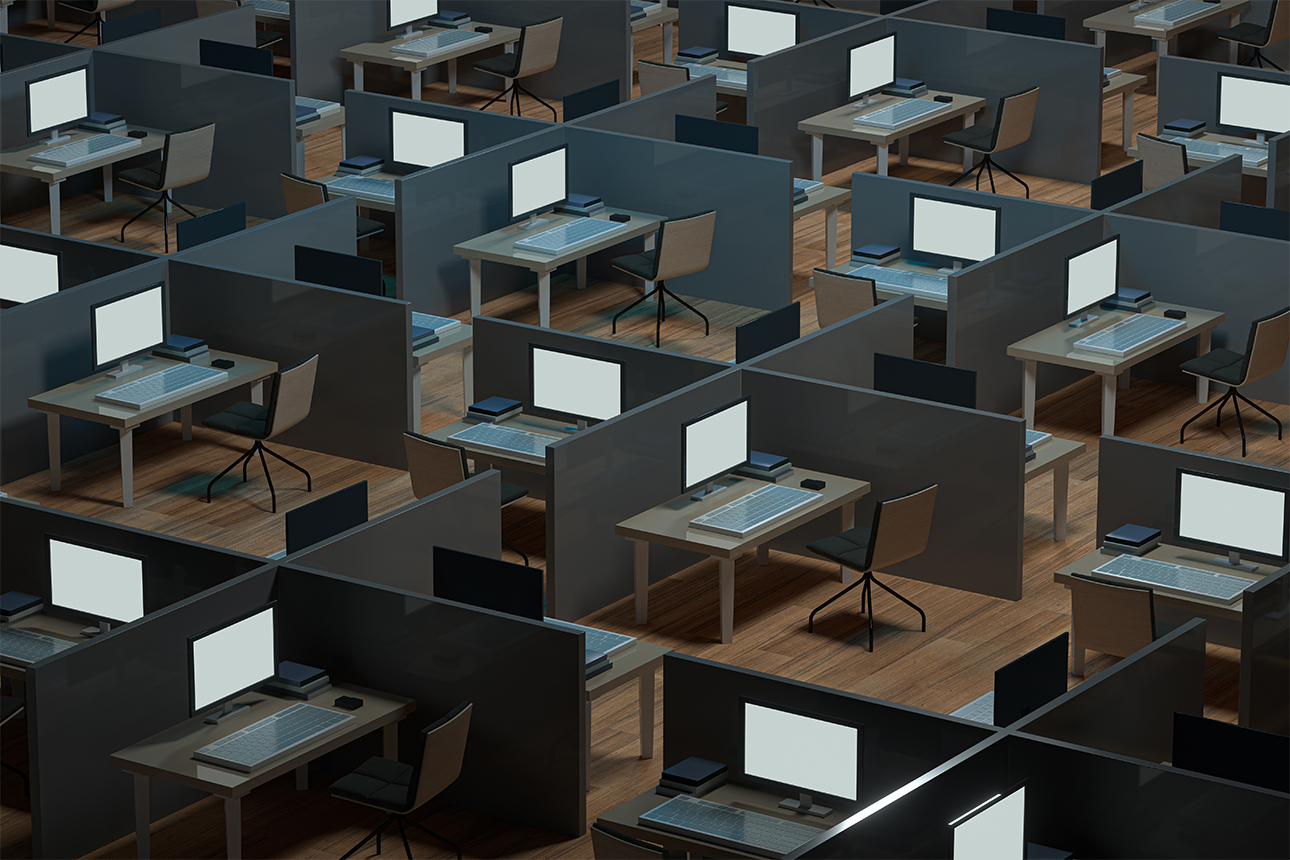Inquire with the most reputable office interior designers or an everyday worker, and they will tell you the same about cubicles. They will let you know that the cubicle once served as a fundamental element of the contemporary workplace environment. They were cost-effective, adaptable, and user-friendly. Also, they provided the perfect remedy for organisations unable to house all their employees in individual offices.
However, the surge of the open office concept decades ago, championed by the tech titans of Silicon Valley and trendy creative agencies, swiftly pushed the cubicle to the sidelines. It became less common in numerous work environments. The prevailing idea was that cubicle partitions and secluded workstations hindered teamwork. Many felt a fully open layout was better for boosting productivity. Yet, in recent years, cubicles have made a surprising comeback.
What Office Interior Designers Want You to Know About Cubicles
A cubicle is a segment of workplace furnishings composed of several panels that create a compact, personal workstation. These individual cubicles collectively foster a more productive environment by organising employees in a layout that promotes collaboration and seclusion.
Cubicles, first introduced in the 1960s, were a hallmark of that era’s innovative office aesthetics. There are both advantages and disadvantages to using cubicles in office design. This is in comparison to alternative layouts and furnishings.
Office Interior Designers Explore the Trend from Open Design to Cubicle Comeback
The open office concept started to wane in popularity during the early 2000s. It was particularly disliked by employees, who encountered minimal privacy and personal space. Organisations were sluggish in responding to the growing discontent with the open office layout. However, they eventually began to take notice. Just before the pandemic struck in 2019, the Harvard Business Review released an insightful study on open offices entitled The Truth About Open Offices.
The study is widely regarded as the crucial turning point that unveiled the reality of the open office. The primary perceived advantages, which include enhanced collaboration and productivity, were largely fabrications. The open office was revealed to be primarily a cost-cutting strategy. Companies compromised employee privacy and comfort in order to accommodate more workstations and reduce office furnishings and overhead expenses for each employee.
In an instant, the open office transformed into something “uncool.” Employees had a credible study to support their arguments against being squeezed into shared seating in the open workspace.
Shortly after, the cubicle made a stylish comeback as a reliable solution offering greater worker privacy. In 2020, the pandemic struck, leading to the closure of numerous offices. Cubicle partitions played a crucial role in facilitating social distancing and curbing the transmission of airborne illnesses as workplaces began to reopen. There was a swift movement to ensure safety and privacy for those employees who could not work remotely.
Fast forward to 2024, and while COVID-19 has faded into the background of office design considerations, cubicles continue to enjoy immense popularity. This trend delights office interior designers who appreciate their blend of functionality and comfort.
Office Interior Designers Reveal the Appeal of Cubicles Today
Enhanced Privacy
Research suggests that open office designs can result in heightened distractions and diminished productivity. A study revealed that numerous employees perceive open offices as harmful to their concentration, with noise and insufficient privacy hurting their brains. Cubicles offer an individualised space that helps alleviate these challenges. It enables employees to focus more effectively and work with greater efficiency. Office interior designers recognise the value of cubicles in creating environments that foster productivity and well-being.
Flexible Design
The contemporary workplace is transforming and cubicles are making a comeback to address these evolving demands. Leading office interior designers assert that cubicles provide a flexible solution that can be effortlessly restructured to suit varying team sizes and project needs. This flexibility is essential for organisations aiming to enhance their work environment and establish a setting accommodating diverse work styles. This ranges from teamwork on projects to individual tasks.
Sound Management
The demand for improved sound control in the workplace also fuels the movement back to cubicles. Open offices, according to office interior designers, although intended for teamwork, frequently lead to heightened noise levels that can obstruct communication and concentration.
A 2019 study conducted among UK employees by Savills UK revealed that 37% of individuals working in an open-plan office feel that the layout of their workplace hampers their productivity levels. One significant factor contributing to this perception may be elevated noise levels, which hinder employees’ ability to concentrate and engage in conversations with their colleagues. This environment can lead to unproductive workers and diminished morale.
Cubicles utilise sound-dampening materials that assist in minimising background noise. Common materials include sound-absorbing panels, which are effective at capturing and dampening sound, and soundproof glass, which acts as a robust noise barrier. Moreover, heavy textiles and acoustic curtains can further decrease noise levels. This helps foster a more serene work atmosphere that boosts productivity and employee contentment.
Embrace the Change with the Finest Office Interior Designers Innovating Cubicle Designs
The revival of office cubicles signifies an important transformation in workplace design, emphasising privacy, adaptability and noise control. As companies strive to improve employee contentment and efficiency, forward-thinking office interior designers are leading the way. Firms like Phi Designs are developing modern cubicle solutions that accommodate diverse work styles. With their expertise, Phi Designs is transforming work environments into inspiring spaces where individuals can truly thrive.
Reach out today to explore how they can create a workspace that empowers your team and enhances your company culture!







Leave a Reply